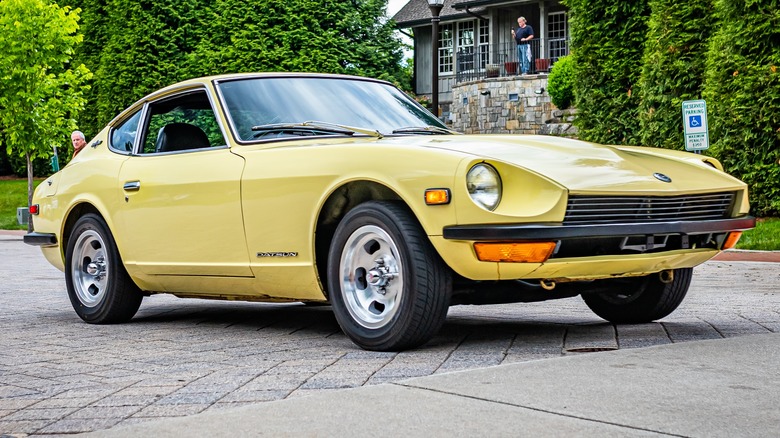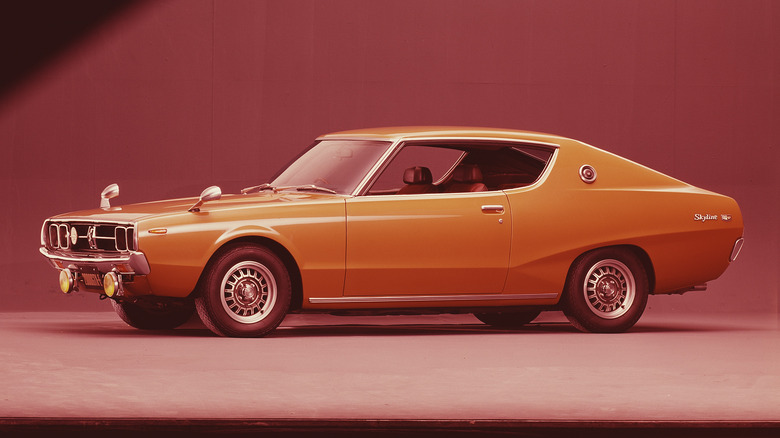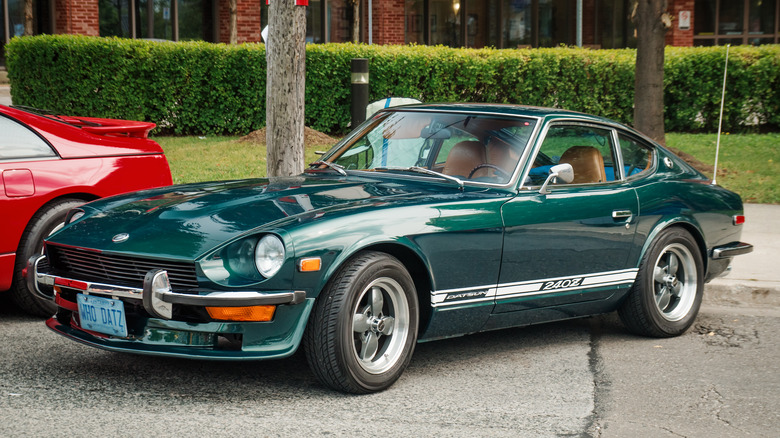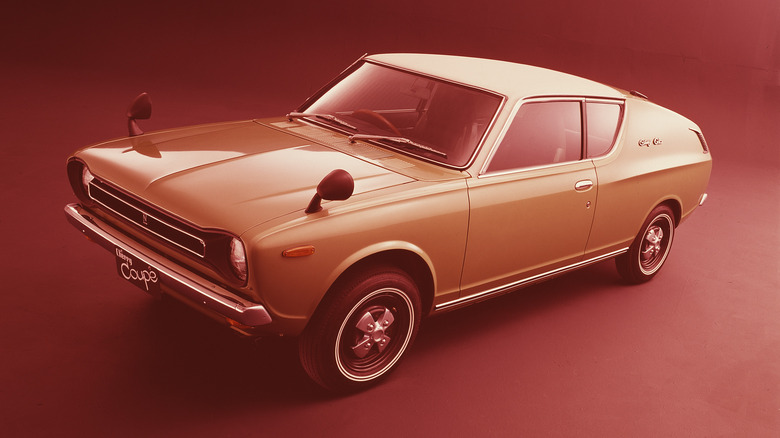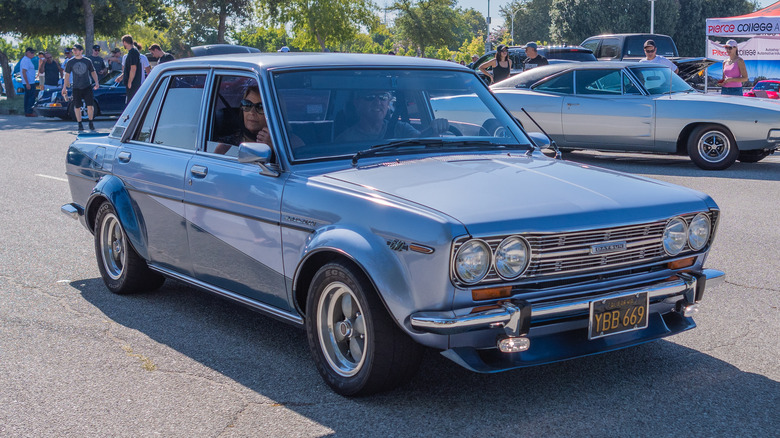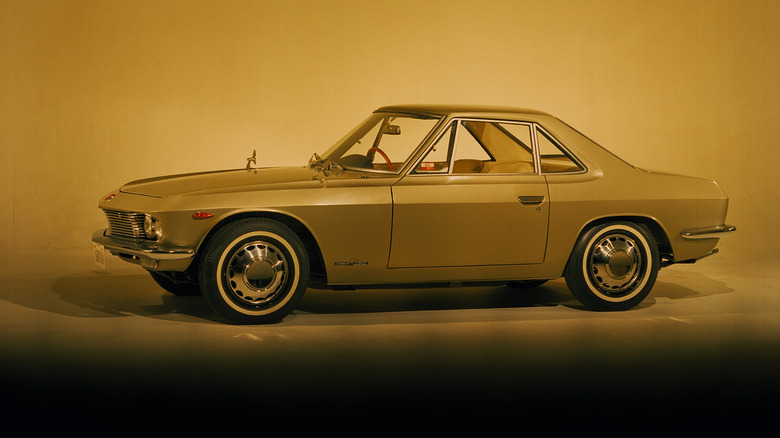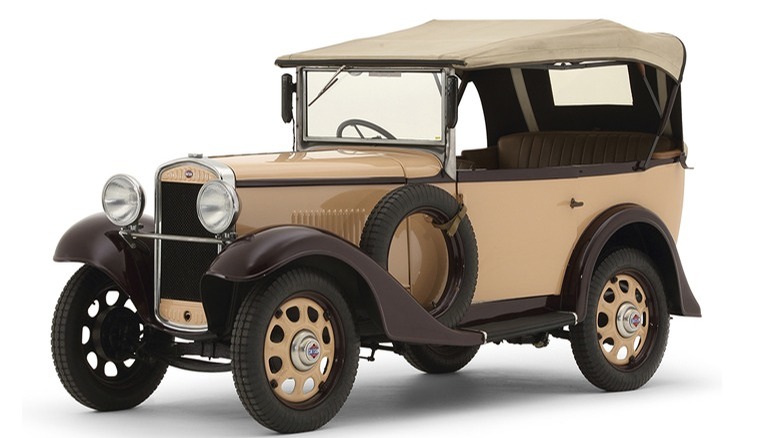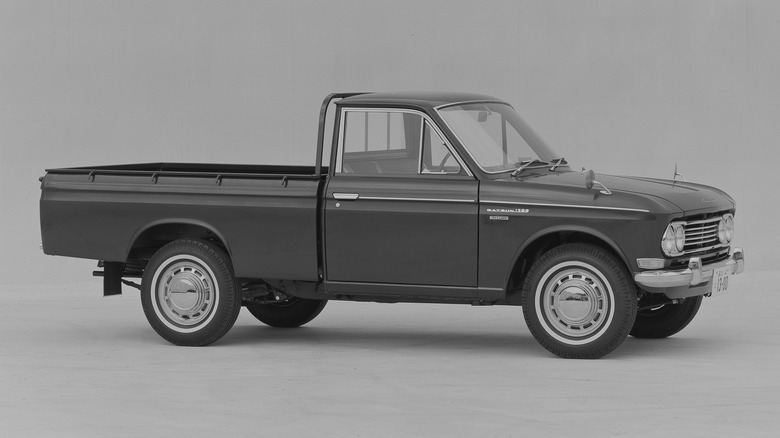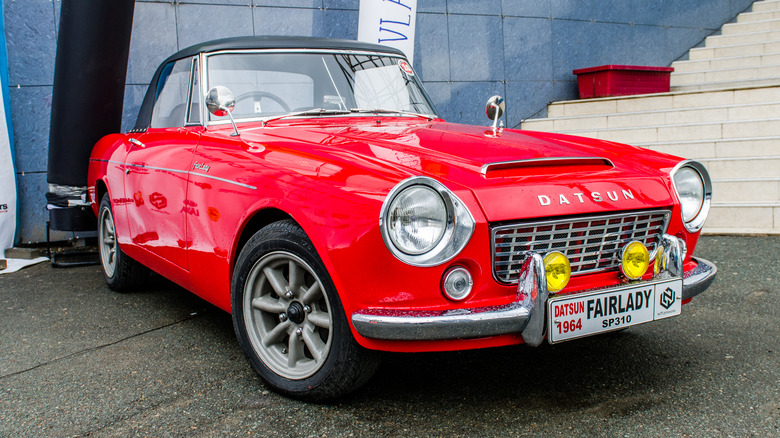8 Of The Best Datsuns Ever Made
The Datsun name goes all the way back to the foundation of Nissan itself in 1934. A new company had been formed from the merger of DAT Automobile Co. and Jitsuyo Automobile Co., and it was decided that the new carmaker would continue using the "Datsun" name that was already in use by the former company. Datsun/Nissan slowly expanded in Japan during the '30s, but like many manufacturers, ended up pausing production to supply the Japanese Army with vehicles and aircraft during the Second World War. The '50s saw a revival in the carmaker's fortunes, with a run of successful domestic vehicles, and bosses saw an opportunity to expand internationally, with America being a priority market.
Datsun's cars proved to be cheaper, better equipped, and more reliable than many of their American rivals, and it didn't take Datsun long to go from an unknown outsider to a household name. All was well until the '80s, when Nissan had a change of heart and decided to put its own name on cars rather than using the Datsun brand. By the mid-'80s, the brand had been phased out globally. It remained that way until 2013, when Nissan relaunched Datsun as a budget brand for developing markets. It didn't last long — by 2022, Nissan had announced it was retiring the Datsun name again to focus on cars with higher profit margins. It's unclear if Datsun will ever make a return, but here are eight of the brand's best cars to date.
Datsun 240K
The relationship between Datsun, Nissan, and Prince could be confusing, with a great example being the Datsun 240K of the '70s. JDM enthusiasts might recognize it as the "Kenmeri" Skyline, which was in itself an evolution of Prince's Skyline model, but it was sold under the Datsun name in most export markets. This rather nondescript branding and Datsun's lack of a marketing push for the car saw it go under the radar for many enthusiasts, and it didn't help that the 240K didn't quite have the lightweight or zippy performance of its better-known stablemate, the 240Z.
Not that the 240K was meant to be able to go toe-to-toe against the 240Z, of course — instead, it was a more practical, family-friendly car, but one built with the same enthusiast-oriented handling and competitive price. The Datsun branding was dropped after the next generation of Skyline was introduced, while the 240K never became the collectible classic that it might have been had it taken the famous Skyline nameplate. However, surviving examples have seen a resurgence in popularity (and price) in recent years as more buyers come to retrospectively appreciate this Skyline in disguise.
Datsun 240Z
If there's one single model that can be credited with Datsun's success across the U.S., it's the 240Z. It was fast, attractively styled, and affordable, yet it still managed to be more reliable than many of its contemporaries. It might not have been the fastest car of its kind, but its 2.4L six-cylinder engine delivered all the power drivers needed, and most of its appeal came from its handling rather than its straight-line speed. The 240Z was wildly successful, with over 160,000 units sold in America alone, and Nissan quickly followed the first-generation car up with the mechanically-similar 260Z and 280Z.
The car's initial popularity has meant that there are plenty of used examples available, and over time, a large aftermarket scene has sprung up around the car. It encompasses everything from mild projects to the most extreme, with one owner even swapping in a turbodiesel engine in an attempt to stand out from the crowd. As the supply of clean examples has begun to shrink, pristine examples now command higher premiums, and it's not unheard of for the best 240Zs to fetch six figures at auction.
Datsun Cherry
Datsun's first front-wheel drive car was unveiled in 1970, a continuation of a project that Prince had been working on prior to being taken over by Nissan in 1966. It sold very well in Europe, since, like many of Datsun's greatest models, it was significantly more reliable than its homegrown rivals while undercutting them in price. Its front-wheel drive layout meant it was as spacious inside as many of Nissan's older, larger cars, and its success helped accelerate the transition to front-wheel drive as more manufacturers caught on to the benefits.
The Cherry survived through several generations, picking up a reputation as a rather boring car along the way. It might not have been able to serve up the driving thrills of its European competition, but it beat them in almost every other possible way. It was more economical, dependable, affordable, and spacious — in short, all the things that buyers actually need in a car. It soldiered on until the mid-'80s, eventually being rebadged with Nissan branding as the company phased out the Datsun name.
Datsun 510
Datsun might have struggled to prove itself as a worthy maker of enthusiast cars in Europe, but in America, it saw more success. Shortly before the launch of the 240Z solidified Datsun's name as a serious player, the 510 proved it could make a sports sedan to compete with America's best. It channeled a familiar formula: offer decent power and handling, strong reliability, and a price that U.S. manufacturers would struggle to match.
Sure enough, the resulting car was a big success, and was instrumental in changing perceptions of Datsun, and by extension, Nissan. Although the sedan variant was the most common Stateside, a number of other variations were offered in Japan and other markets, including a two-door coupe. The 510 became a cult favorite for racers and tuners, and its commercial success has meant that there's always been a steady supply of used cars and spare parts available. Like many Japanese classics, the car isn't as affordable as it once was, as nostalgia for Japan's golden era of car manufacturing has made clean examples highly sought-after among collectors.
Datsun Coupe 1500/Nissan Silvia
The internal confusion between Nissan and Datsun badging stemmed back well before the automaker's attempts to retire the Datsun badge in the '80s, and was a key issue for one of its most important sports cars ever. The first Nissan Silvia was originally called the Datsun Coupe 1500 when it was revealed at the Tokyo Auto Show in 1964 but was eventually badged as a Nissan when it launched in Japan. It was sold in various export markets too, although the car's high price meant it saw very little success. Not helping matters was its name. It was reportedly marketed as a Datsun in export markets, under a variety of names including the 1600 Coupe and Coupe GT, even though every production car featured only Nissan badging.
All this confusion meant that very few examples were ever sold outside of Japan, with 49 examples reportedly finding homes in Australia, and 10 more in various Asian markets. In total, around 550 examples were built, all of which were partly handmade. It might not have been a commercial success, but the first Silvia paved the way for the revered S-chassis cars, and today any surviving examples are highly sought after on the very rare occasion they can be found for sale.
Datsun 12 Phaeton
The first Datsun-branded product to be produced after the creation of Nissan was the 12 Phaeton of 1933, a four-door convertible with a cloth roof. It made just 12 horsepower from its 748cc engine and was closely related to the Datsun 10 made by DAT Automobile Co. the previous year. The Datsun name itself was coined in 1931 when engineers finished work on a new car that was smaller and lighter than the original DAT. It was first christened "Datson," but that name was later deemed inappropriate as "son" means "loss" in Japanese.
The spelling was changed to "sun," which avoided the issue, and the "Datsun" marque was born. The 12 Phaeton was just the first of several iterative versions of the original Datsun line, which would grow to be increasingly successful until Japan's declaration of war forced all automotive manufacturing to stop. Very few examples of the 12 Phaeton or any other early Datsun are thought to survive today, although Nissan has eight examples of the line in its official Heritage Collection.
Datsun 520
Alongside passenger cars, Datsun also produced a long line of pickup trucks, and out of them all, it's the 520 that stands out as being the biggest innovation. It was the first pickup to be designed specifically with the American market in mind, with revised styling and a longer body than previous trucks. It launched as the direct replacement to the 320 — the "420" moniker was skipped because in Japanese it sounded like the word for "rudeness."
As well as improving practicality, Nissan focused on improving the ride and comfort of the 520, making it a more comfortable daily workhorse. It proved to be very successful, with attractive pricing that bettered what American manufacturers could offer. The later 620 improved on this formula even more, and today both mini trucks have become cult classics, with plenty of aftermarket upgrades and modifications available. Many had hard lives and it's not easy to find one in clean condition; like many of the other Datsuns here, pristine examples will command a premium whenever they are listed for sale.
Datsun Fairlady 1500
Datsun's early success with sports cars was helped by designers taking a healthy dose of inspiration from British roadsters of the era, and the first of those sports cars was the Fairlady 1500. It featured a 1.5L engine making around 79 horsepower that was borrowed from the Nissan Cedric. Most of its design cues were taken from rivals including Triumph and MG, and the formula was ultimately a winning one. Euro-style good looks with the affordable price and solid build quality of the early Datsuns meant that they sold well, primarily in Japan but also in certain export markets.
The car also carved out a reputation as a force to be reckoned with in motorsport, with a Fairlady 1500 in stripped-out race spec winning the inaugural Japan GP race at Suzuka in 1963. The Fairlady 1500 predates all of Nissan's other sports cars, but its success ultimately led to the development of the Silvia and 240Z, both of which would be instrumental in forging the company's rise to the big leagues of the auto industry.
